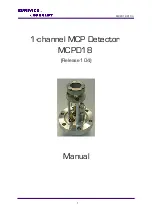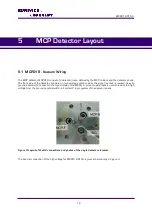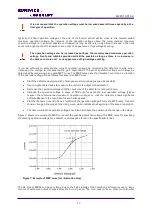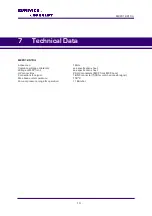
MCPD18 R104
6 Microchannel Plate
6.1 Specifications
Please check the specification sheet of the MCPD for the exact MCP specification.
6.2 Storage
Because of their structure and the nature of the materials used in manufacture, care must be taken when
handling or operating MCPs. The following precautions are strongly recommended:
The most effective long-term storage environment for an MCP is an oil-free vacuum.
6.3 Handling
Shipping containers should be opened only under class 100 Laminar flow cleanroom conditions.
Personnel should always wear clean, talc-free, class 100 clean-room compatible, vinyl gloves when
handling MCPs. No physical object should come into contact with the active area of the wafer. The
MCP should be handled by its rims, there is no solid glass border! Use clean degassed tools
fabricated from stainless steel, Teflon™ or other ultra-high vacuum-compatible materials. Handling
MCPs should be limited to trained, experienced personnel.
MCPs without solid glass border should be handled very carefully with great care taken to contact
the outer edges of the plate only.
The MCP should be protected from exposure to particle contamination. Particles which become
affixed to the plate can be removed by using a very pure and low pressure air flow such as from a
clean rubber bellows.
The MCP should be mounted only in fixtures designed for this purpose. Careful note should be taken
of electrical potentials involved.
14






































